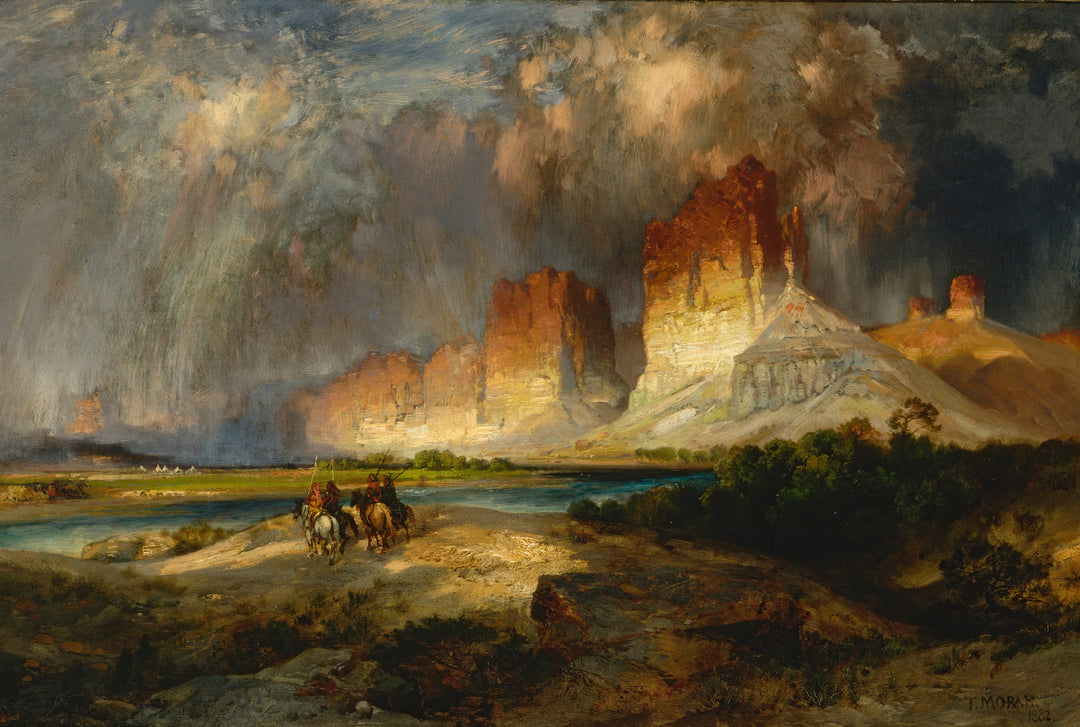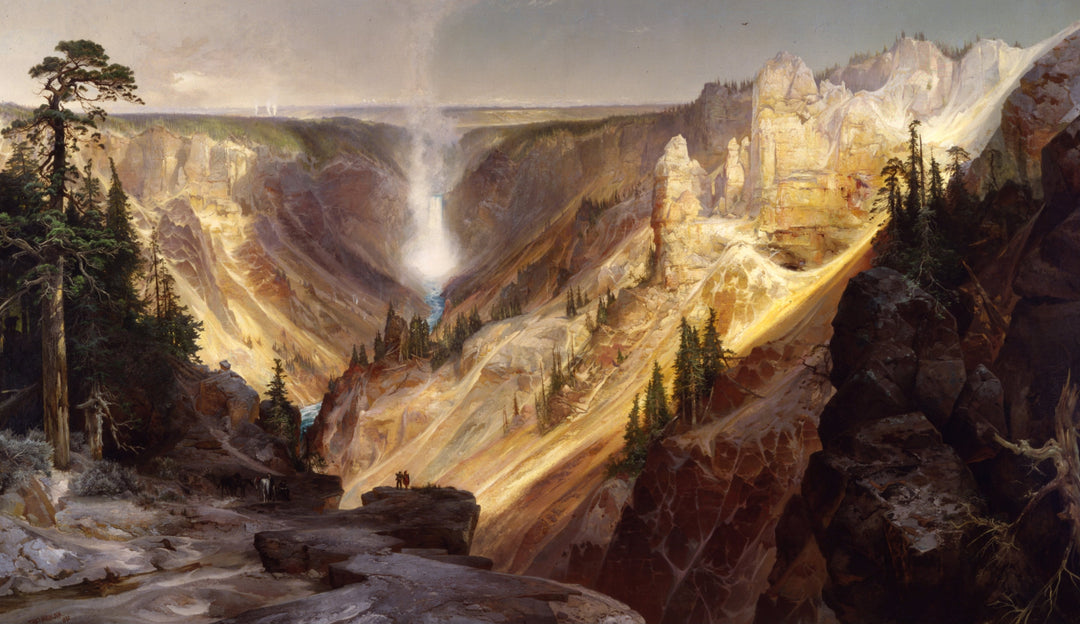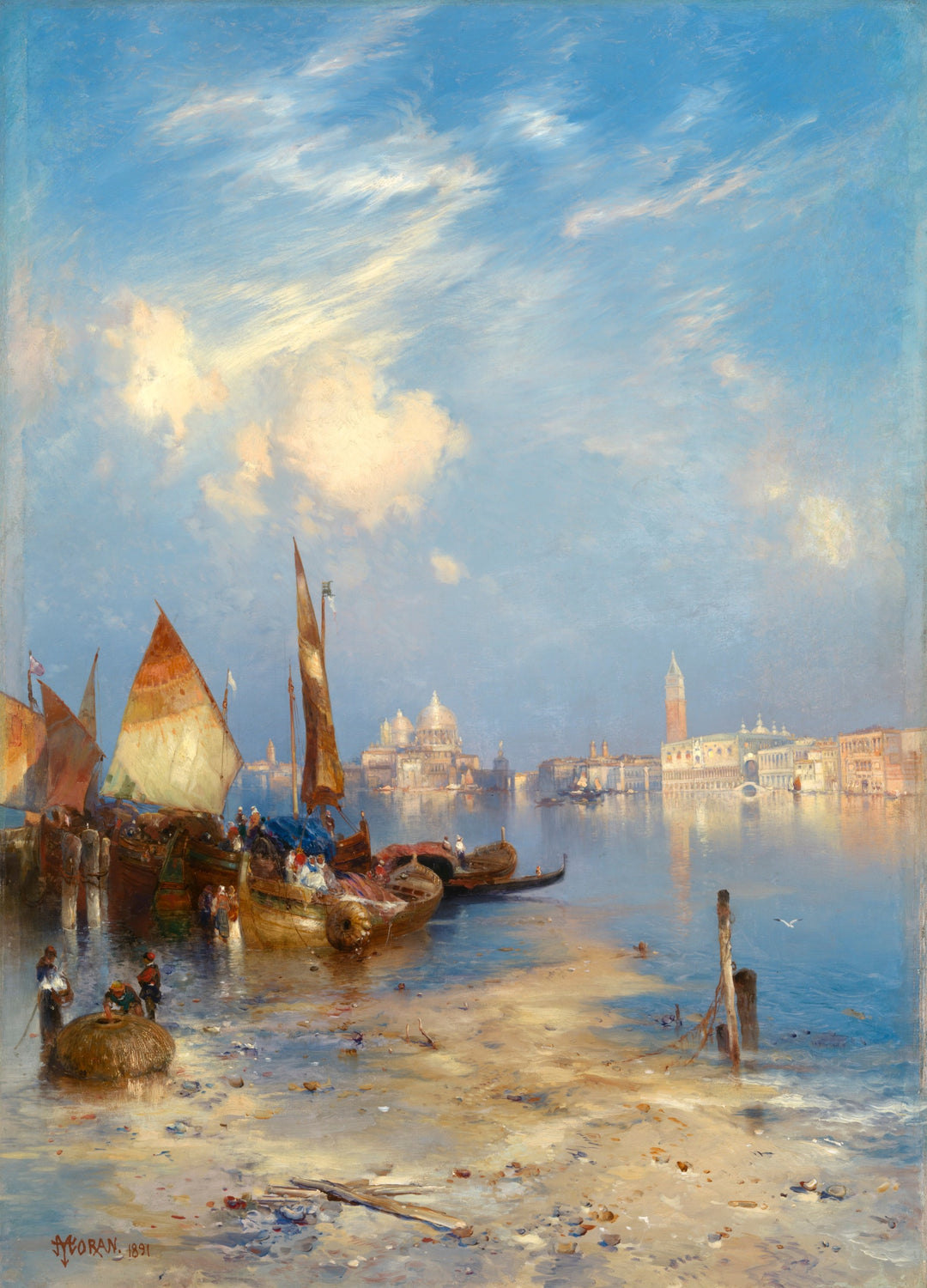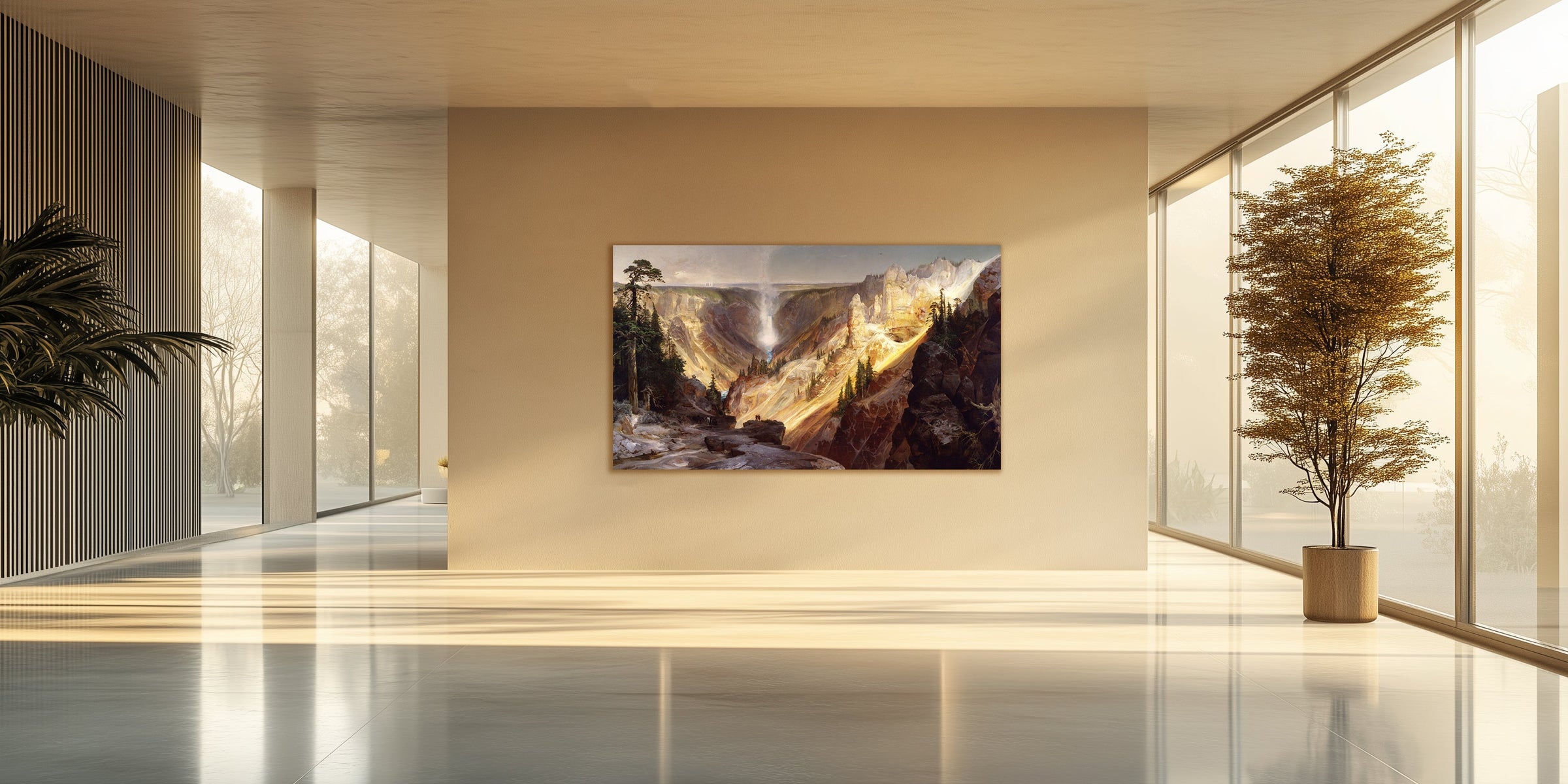
Thomas Moran
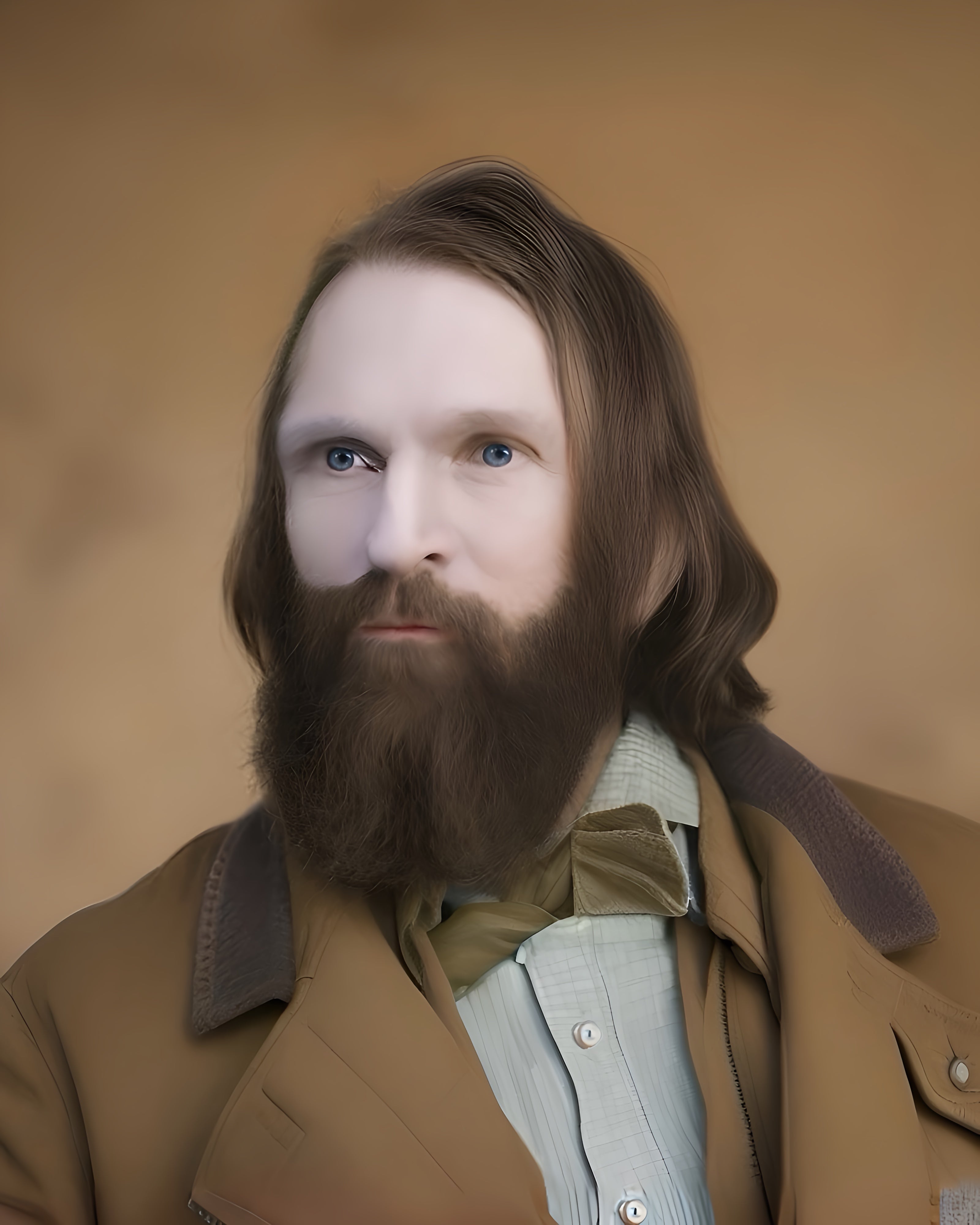
Thomas Moran (1837-1926) was a prominent 19th-century painter known for his stunning landscapes of the American West. Born in England, Moran emigrated with his family to Philadelphia when he was young, where he began working as an illustrator before dedicating himself to painting. Thomas was influenced by the Romantic movement and the painters of the "Hudson River School," such as Thomas Cole and Albert Bierstadt, who celebrated the grandeur and beauty of nature. His participation in an expedition to "Yellowstone National Park" in 1871 was a crucial moment in his career, as the paintings he created afterward, such as "The Grand Canyon of Yellowstone," not only established him as one of the great landscape artists of his time but also helped promote the creation of the first national park in the United States.
On a personal level, Moran was married to Mary Nimmo Moran, also a renowned engraver, and they had three children: Paul Nimmo Moran, Mary Scott Moran, and Ruth Bedford Moran. His family shared his love for art and dedication to nature. Moran grew up in a Quaker religious household, which influenced his romantic and Arcadian approach to nature, clearly reflected in his work. His works are characterized by meticulous attention to light and color, achieving an almost mystical atmosphere in his depictions of mountains, rivers, and valleys.
Moran, like Bierstadt, was part of an artistic movement that sought to capture the wild and sublime essence of America. Among the artists he influenced were Frederic Church, a key member of the Hudson River School, and Charles Partridge Adams, who shared his fascination with monumental landscapes. Moran, in addition to being technically precise, used his art to convey a deep respect for nature, a quality that defined his style and set him apart from other painters of his era.
